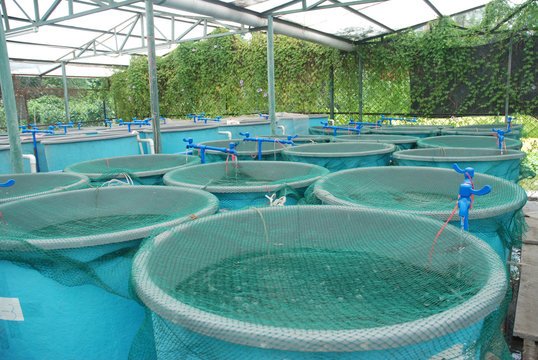
In a world where the demand for seafood is constantly rising, ensuring that our oceans remain healthy is a shared responsibility. Sustainable aquaculture offers a promising path forward—producing seafood in ways that respect the environment, protect marine life, and support local communities. Unlike traditional fishing, which often puts heavy pressure on wild stocks, sustainable aquaculture focuses on responsible farming methods that minimize ecological impact while meeting our nutritional needs.
Imagine fish farms that don’t harm the ocean floor, shrimp ponds that recycle water, or shellfish farms that actually help filter and clean seawater. This is not just wishful thinking—it’s the core of what sustainable aquaculture strives to achieve. It’s about working with nature instead of against it, ensuring that the seafood we enjoy today doesn’t compromise the ability of future generations to enjoy it too.
In this article, we’ll dive into the principles, practices, and benefits of sustainable aquaculture. You’ll discover how it works, why it matters, and how you, as a consumer, can make choices that support healthier oceans and more resilient food systems. Let’s explore how this approach is shaping the future of seafood for the better.
Principles of Sustainable Aquaculture
Sustainable aquaculture is guided by a set of principles designed to protect ecosystems, respect biodiversity, and ensure fair economic practices. The first principle is environmental stewardship—ensuring farming operations avoid pollution, habitat destruction, and overuse of resources. This means selecting farm sites carefully, controlling waste, and using feeds that come from sustainable sources.
Another core principle is animal welfare. Fish, shellfish, and other aquatic species must be raised in healthy, stress-free environments that allow them to grow naturally. This includes maintaining clean water, proper stocking densities, and careful disease prevention without excessive reliance on chemicals.
Finally, sustainable aquaculture emphasizes social responsibility. This involves fair labor practices, support for local economies, and transparency in operations. Communities benefit when aquaculture creates stable jobs and fosters partnerships between farmers, scientists, and environmental organizations. By following these principles, aquaculture can produce high-quality seafood without harming the planet or the people who depend on it.
Key Practices in Sustainable Aquaculture
To put these principles into action, aquaculture operations adopt a range of best practices. One common approach is integrated multi-trophic aquaculture (IMTA), where different species—such as fish, shellfish, and seaweed—are farmed together in a way that mimics natural ecosystems. Waste from one species becomes food for another, reducing environmental impact.
Another practice is closed or recirculating aquaculture systems (RAS), which filter and reuse water within land-based facilities. These systems prevent pollution from reaching natural waterways and give farmers more control over water quality and disease prevention.
Sustainable farms also avoid relying heavily on wild-caught fish for feed, instead using plant-based proteins or by-products from responsibly managed fisheries. These innovations ensure that aquaculture growth doesn’t put additional strain on ocean ecosystems.
Environmental Benefits
When done correctly, sustainable aquaculture can play a major role in protecting marine environments. By reducing the need for wild-caught fish, it helps relieve pressure on overfished species. Practices like shellfish farming even improve water quality, as mussels and oysters naturally filter the water they live in.
Moreover, sustainable aquaculture minimizes habitat destruction by avoiding sensitive areas like mangroves and coral reefs. This allows these crucial ecosystems to continue providing shelter for countless marine species. With careful planning and monitoring, aquaculture can work alongside nature to restore balance rather than disrupt it.
Economic and Social Benefits
Beyond environmental gains, sustainable aquaculture brings significant economic and social advantages. It creates steady jobs in coastal and rural communities, often in regions where other employment opportunities are scarce. By promoting fair wages and safe working conditions, it supports livelihoods in a responsible way.
For consumers, it means access to fresh, nutritious seafood year-round. For local economies, it means greater food security and economic resilience in the face of climate and market changes. Sustainable aquaculture ensures that both producers and consumers share in the benefits of a thriving seafood industry.
How Consumers Can Support Sustainable Aquaculture
Consumers have a powerful role to play in encouraging responsible aquaculture. Choosing products certified by credible sustainability programs—such as Friend of the Sea—ensures your seafood comes from farms that meet strict environmental and social standards.
Asking restaurants and retailers about the origin of their seafood also sends a clear signal that you value sustainable practices. By supporting these businesses, you help create more demand for responsible aquaculture, encouraging more farms to adopt best practices.
The Future of Seafood
With the global population expected to reach nearly 10 billion by 2050, the demand for seafood will continue to grow. Sustainable aquaculture offers a way to meet this demand without depleting our oceans. Through innovation, collaboration, and strong sustainability standards, it can become a cornerstone of a secure and environmentally sound food system.
By embracing this approach today, we take a vital step toward ensuring that healthy, abundant oceans remain part of our shared future.

